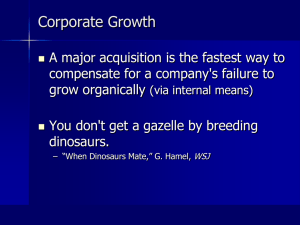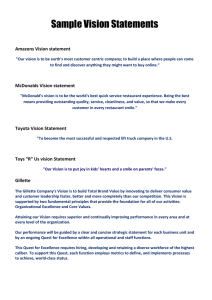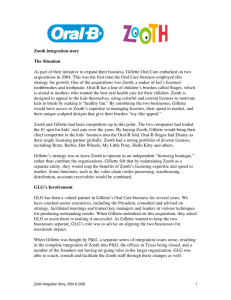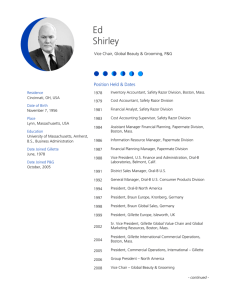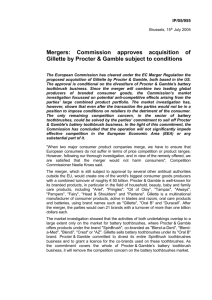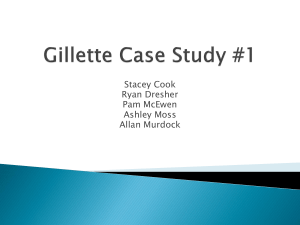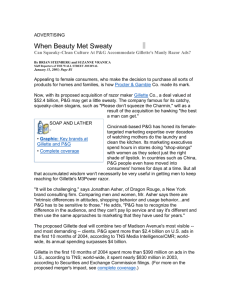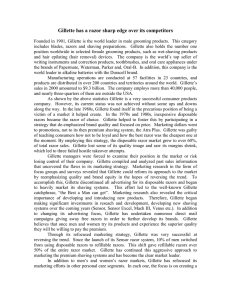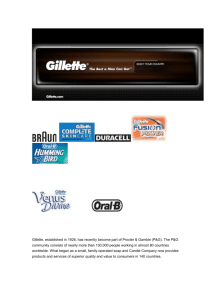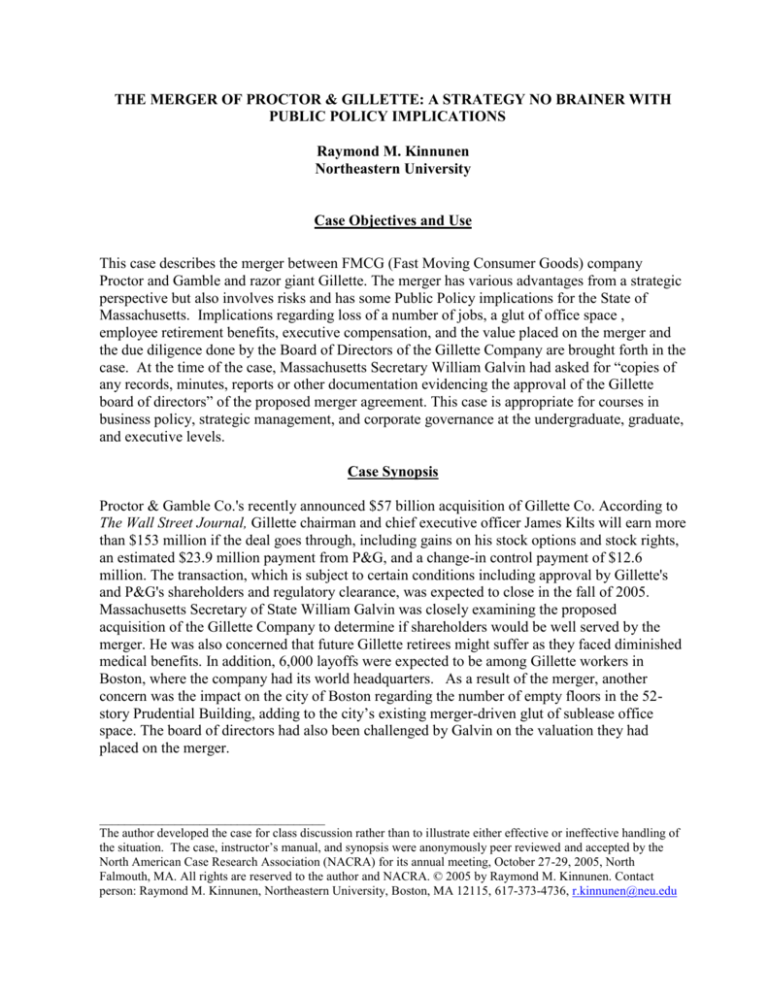
THE MERGER OF PROCTOR & GILLETTE: A STRATEGY NO BRAINER WITH
PUBLIC POLICY IMPLICATIONS
Raymond M. Kinnunen
Northeastern University
Case Objectives and Use
This case describes the merger between FMCG (Fast Moving Consumer Goods) company
Proctor and Gamble and razor giant Gillette. The merger has various advantages from a strategic
perspective but also involves risks and has some Public Policy implications for the State of
Massachusetts. Implications regarding loss of a number of jobs, a glut of office space ,
employee retirement benefits, executive compensation, and the value placed on the merger and
the due diligence done by the Board of Directors of the Gillette Company are brought forth in the
case. At the time of the case, Massachusetts Secretary William Galvin had asked for “copies of
any records, minutes, reports or other documentation evidencing the approval of the Gillette
board of directors” of the proposed merger agreement. This case is appropriate for courses in
business policy, strategic management, and corporate governance at the undergraduate, graduate,
and executive levels.
Case Synopsis
Proctor & Gamble Co.'s recently announced $57 billion acquisition of Gillette Co. According to
The Wall Street Journal, Gillette chairman and chief executive officer James Kilts will earn more
than $153 million if the deal goes through, including gains on his stock options and stock rights,
an estimated $23.9 million payment from P&G, and a change-in control payment of $12.6
million. The transaction, which is subject to certain conditions including approval by Gillette's
and P&G's shareholders and regulatory clearance, was expected to close in the fall of 2005.
Massachusetts Secretary of State William Galvin was closely examining the proposed
acquisition of the Gillette Company to determine if shareholders would be well served by the
merger. He was also concerned that future Gillette retirees might suffer as they faced diminished
medical benefits. In addition, 6,000 layoffs were expected to be among Gillette workers in
Boston, where the company had its world headquarters. As a result of the merger, another
concern was the impact on the city of Boston regarding the number of empty floors in the 52story Prudential Building, adding to the city’s existing merger-driven glut of sublease office
space. The board of directors had also been challenged by Galvin on the valuation they had
placed on the merger.
____________________________________
The author developed the case for class discussion rather than to illustrate either effective or ineffective handling of
the situation. The case, instructor’s manual, and synopsis were anonymously peer reviewed and accepted by the
North American Case Research Association (NACRA) for its annual meeting, October 27-29, 2005, North
Falmouth, MA. All rights are reserved to the author and NACRA. © 2005 by Raymond M. Kinnunen. Contact
person: Raymond M. Kinnunen, Northeastern University, Boston, MA 12115, 617-373-4736, r.kinnunen@neu.edu



